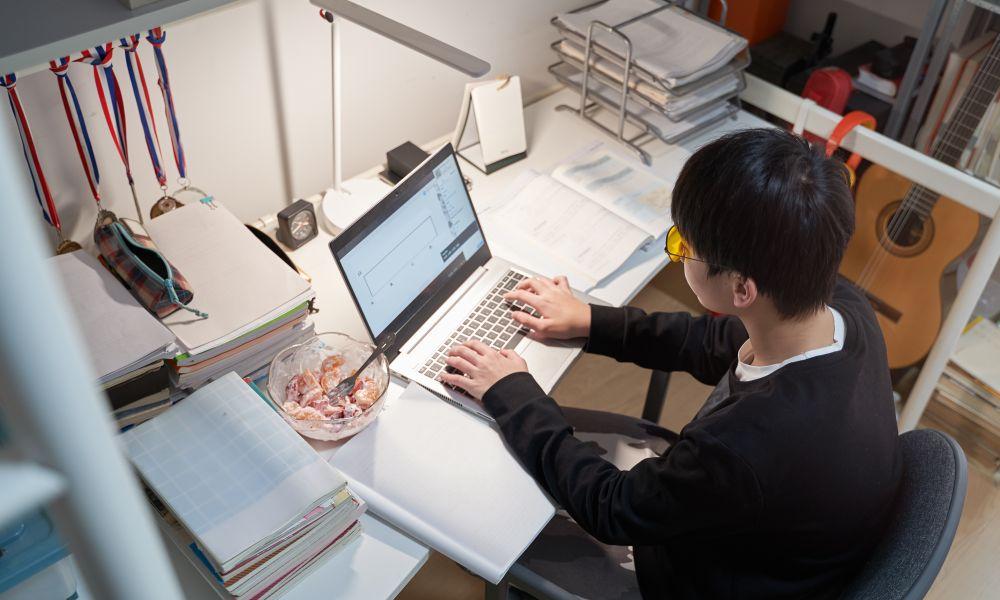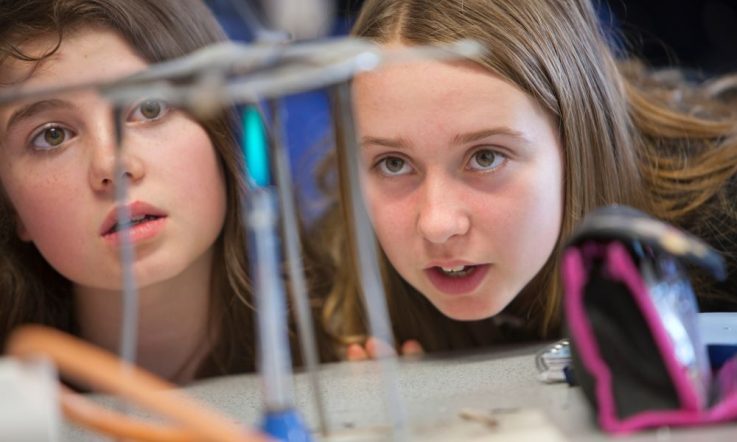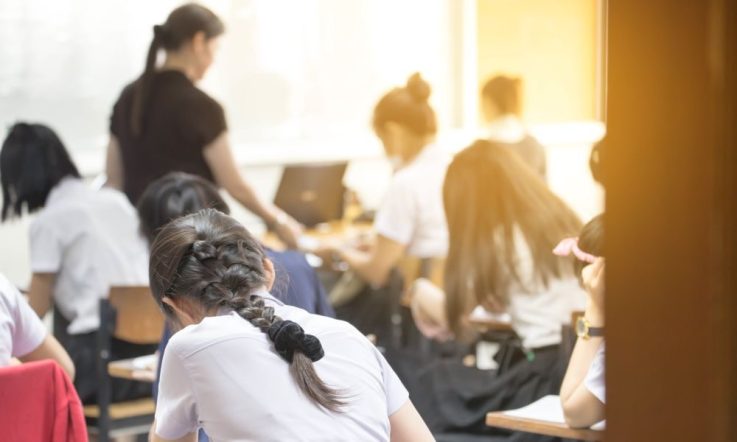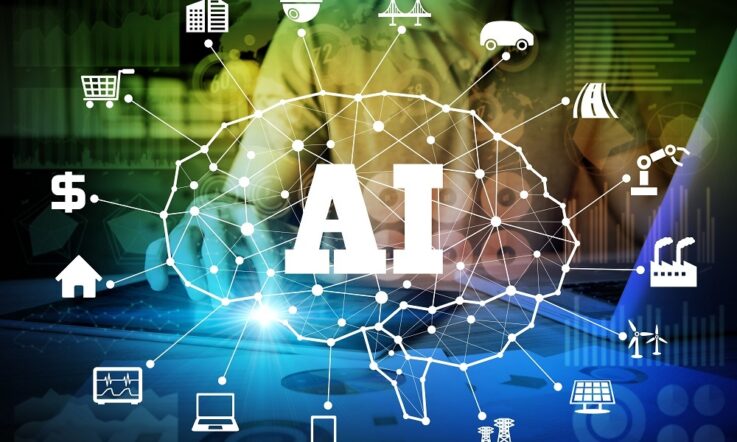The OECD’s Programme for International Student Assessment (PISA) measures the knowledge and skills of 15-year-old students in mathematics, science and reading, and how well they are prepared to use these to meet real-life opportunities and challenges. In this new content series, we’ll delve deeper into the latest PISA data to explore how education systems are working to lift student outcomes. This first article looks at education innovation in Singapore.
Considered one of the top-performing education systems in the world, Singapore achieved the highest results in all 3 subjects for PISA 2022. Students in Singapore scored 88 points higher than Australia in mathematics, 54 points higher in science and 45 points higher in reading (for context, the OECD estimates students learn at a rate of just over 20 points per year, meaning there is between 2- and 4-years’ difference in the achievement of Australia’s students compared to Singapore’s). In maths and science, 92% of students in Singapore attained at least Level 2 proficiency, and the figure for reading was 89% – compared to 74%, 80%, and 79%, respectively, in Australia.
To understand just some of what Singapore does to consistently deliver such great results, we spoke to Deputy Director-General of Education (Curriculum), Mr Sng Chern Wei, to discuss a new home-based learning initiative the Ministry of Education has implemented.
As schools shuttered their premises during the height of the COVID-19 pandemic, students in Singapore, like in many other countries, were forced to shift to home-based learning (HBL). During this time, the Ministry of Education (MOE) in Singapore noticed how this drastic shift in schooling had fostered practical learning skills in students that, with more time and development, could be hugely beneficial in preparing them for the future.
As a result, once schools reopened and students returned to the classroom, the MOE sought to retain HBL as a regular feature in the schooling experience – aiming to create self-directed, passionate learners prepared for a fast-paced future.
‘During HBL, we had seen how students became more self-directed and independent in their learning …’, Deputy Director-General of Education (Curriculum), Mr Sng Chern Wei, tells Teacher.
‘We also received anecdotal feedback that some students were motivated to pursue their personal interests, such as learning a foreign language or coding,’ he adds. ‘These skills will strengthen our students’ future-readiness.’
To build on these skills, a new nationwide initiative means all secondary schools and pre-university institutions in Singapore now include regular HBL days. During these days, which typically occur around once a fortnight, students learn curriculum content remotely and at their own pace – empowering them to take charge of their own learning. HBL days also comprise a component of Student-Initiated Learning (SIL), where students learn outside of the curriculum based on their own interests.
‘The implementation of regular HBL days provides more opportunities for students to become self-directed, passionate, and lifelong learners,’ says Mr Sng Chern Wei
Establishing a framework for HBL
The MOE says the ability for teachers and students to quickly adapt during school closures meant that Singapore was well-placed to continue incorporating HBL once schools reopened.
‘[During COVID] our teachers demonstrated resourcefulness, teamwork, and resilience in quickly adapting to teaching remotely, leading to innovative HBL lessons,’ says Mr Sng Chern Wei.
Of course, continuing this way of learning could only be done with the support of appropriate resources and education – something, he adds, Singapore has been thorough in providing. Among other digital resources, students and teachers have access to Singapore’s Student Learning Space (SLS), a national online learning platform that hosts a library of quality curriculum-aligned learning resources covering all subjects from the primary to pre-university levels. Teachers can tap into and customise these resources to support their teaching, and students can access the platform both in and out of the classroom to learn at their own pace.
Singapore also provides all secondary school students with personal learning devices (PLDs) and ‘cyberwellness’ education, ensuring everyone has access to digital devices and resources, as well as the knowledge to use them responsibly. The MOE says this helps to create a HBL environment where all students have the same resources and skills to be successful.
Additional in-school support for students
Despite these resources, the HBL isn’t necessarily a perfect fit for all students. For these students, there is extra support. For example, all PLDs have a Device Management Application installed to support schools and parents in managing device use with the student, while those who are struggling with the SIL component can get suggestions for activities, or even be provided resources from their school. This support can then be reduced over time as the student gets more confident.
Additionally, schools do remain open during HBL days for students who need it. This could include students that may not have adequate space or a quiet environment to study at home, or are struggling to adapt to a self-directed learning approach, for example. In this case, students are still self-directed and continue to learn through the HBL approach, but they have the additional guidance and structure that comes from being in a classroom environment and having teachers on-hand.
How HBL fits into Singapore’s wider education strategy
Singapore is considered one of the top-performing education systems in the world, regularly achieving some of the highest results in international assessments such as PISA. The MOE says forward-thinking initiatives like HBL build on this core success and fit into a wider-strategy of developing students that can thrive in a fast-paced, digital world.
‘Technology has become a critical enabler of learning. We aim to nurture digitally empowered, future-ready learners and innovators, who are prepared for a technology-transformed world … [The Ministry of Education] aims to harness the power of technology, including Artificial Intelligence, to better customise students’ learning experiences, further enhance teaching and learning, and develop students ….’ says Mr Sng Chern Wei.
Follow along for more PISA content
If you enjoyed these insights, be sure to stay up to date with new Teacher content by signing up to our bulletin and following us on social media. Over the next few months, we will be releasing more content exploring the international PISA 2022 Results (Volume I).
A new Australian report on data from PISA’s principal and teacher questionnaires is due to be released in late May, so stay tuned to Teacher for more on that front.
How do you develop students that have the practical skills to thrive in future study or work, post-secondary school?
As we move into an increasingly digital word, the Ministry of Education Singapore notes the importance of utilising technology in learning. Are your students confident digital learners?
The home-based learning initiative came about because of the unexpected skills students developed during the limitations of COVID learning. Do you use challenges and limitations at your school to find creative solutions and inform your future practice?



